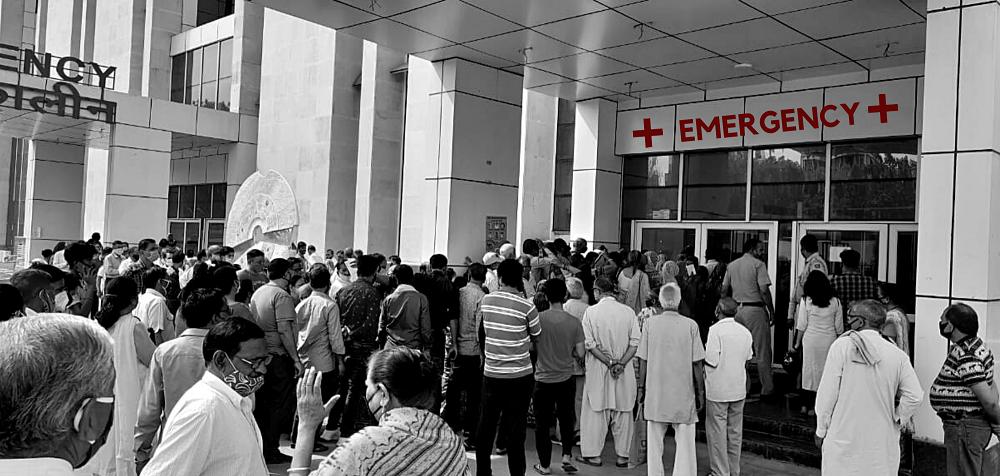From UPSC perspective, the following things are important :
Prelims level: Na
Mains level: importance of prioritizing primary healthcare

Central Idea:
The article discusses the importance of health reform in India, highlighting the necessity for political parties to prioritize it in their manifestos. It emphasizes the need to strengthen primary healthcare systems, citing successful examples from other countries like Thailand, and proposes comprehensive reforms to address India’s healthcare challenges.
Key Highlights:
- Manifestos serve as important documents reflecting political parties’ priorities and commitments.
- Both BJP and Congress manifestos in 2014 and 2019 highlighted the importance of revamping the primary healthcare system, but with differing perspectives on healthcare delivery.
- Past initiatives like the National Rural Health Mission under the UPA and policy continuity under the NDA have made incremental progress but haven’t addressed fundamental healthcare system flaws.
- Comparison with countries like Thailand and Turkey underscores India’s need for more ambitious and effective healthcare reforms.
- The focus should shift towards strengthening primary and secondary healthcare infrastructure to address the majority of health needs effectively.
- Successful reform examples emphasize deliberate planning, strong local capacity building, and a focus on community outcomes.
- Challenges include political will, overcoming preoccupation with high-end hospitals, and implementing synchronized reforms at the grassroots level.
Key Challenges:
- Political reluctance to prioritize primary healthcare over high-end hospital infrastructure.
- Resistance to reforming entrenched healthcare delivery models and governance structures.
- Capacity building and resource allocation at the district level to implement reforms effectively.
- Varying levels of capability across states necessitate tailored approaches to reform implementation.
- Addressing lifestyle factors contributing to disease incidence and out-of-pocket healthcare expenses.
- Overcoming market failures and governance challenges in healthcare service provision.
Main Terms or key terms for answer writing:
- Primary healthcare
- Universal Health Coverage (UHC)
- Health reform
- Public-private partnerships (PPP)
- Human resources for health
- Social health insurance
- Medical curriculum reform
- Decentralization
- Operational flexibilities
- Accountability framework
Important Phrases for quality answers:
- “Reforming the very architecture of the health system”
- “Building a system ‘fit for purpose'”
- “Operational flexibilities within a proactive, accountability framework”
- “Imagination to design the process of reform”
- “Infusion of new institutional and organizational capacities”
- “Reducing demand for hospitalization”
- “Out-of-pocket expenditures”
Quotes that you can use for essay writing:
- “Manifestos are useful documents… enabling people to hold the elected party accountable.”
- “India’s strategy for UHC has hinged on purchasing services from a private sector operating on the inflationary a fee for service model…”
- “Can our political parties commit themselves to such a process in their manifestos? Or, is that a big ask?”
Useful Statements:
- “Twenty years is a long time… Thailand… achieved significant outcomes within half the time span.”
- “India has a long way to go… States such as Bihar still have one doctor serving per 20,000 population.”
- “Successful examples of such reform processes show deliberate intent executed to a plan.”
Examples and References for value addition in your mains answer:
- Thailand’s Universal Health Coverage implementation in 2000.
- Turkey’s Health Transformation Program in 2003.
- India’s National Rural Health Mission and National Medical Commission establishment.
Facts and Data:
- India’s maternal mortality is three times more than the global average.
- 95% of ailments and disease reduction can be handled at the primary and secondary level.
- India’s public spending on healthcare has hovered around an average of 1.2% of GDP.
Critical Analysis:
The article provides a critical analysis of past healthcare initiatives in India, highlighting their incremental nature and failure to address fundamental system flaws. It underscores the importance of prioritizing primary healthcare and comprehensive reform to achieve equitable, effective healthcare delivery.
Way Forward:
- Prioritize strengthening primary healthcare infrastructure.
- Implement comprehensive healthcare reforms addressing governance, human resources, and service delivery.
- Tailor reform strategies to suit varying state capabilities.
- Shift focus towards community outcomes and accountability.
- Address lifestyle factors contributing to healthcare burden.
- Overcome political reluctance and vested interests to achieve meaningful reform.
Answer the following question and write your answer in comment box
How can India learn from successful healthcare reform initiatives in other countries like Thailand and Turkey to address its own healthcare challenges effectively?
Get an IAS/IPS ranker as your 1: 1 personal mentor for UPSC 2024
